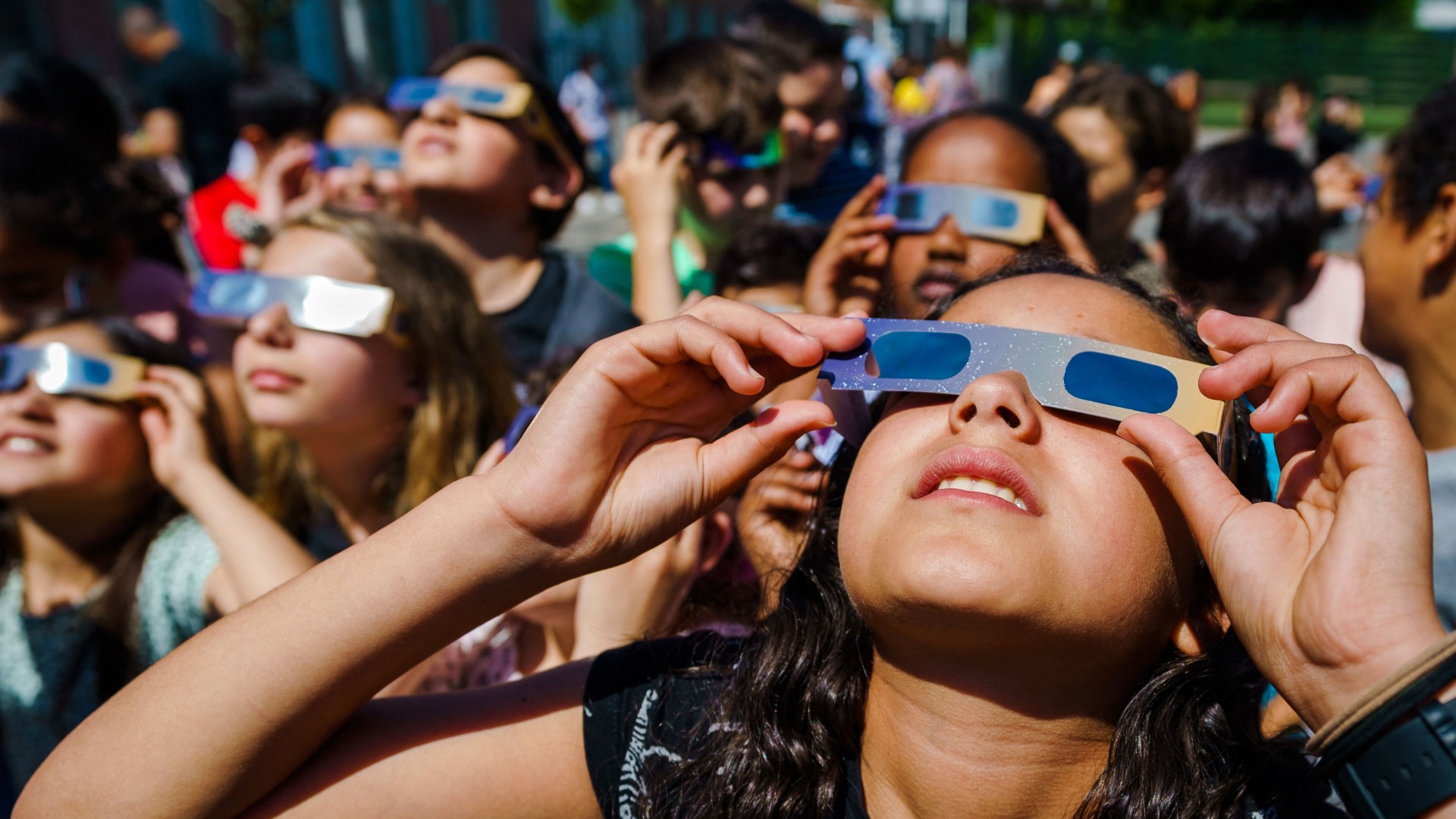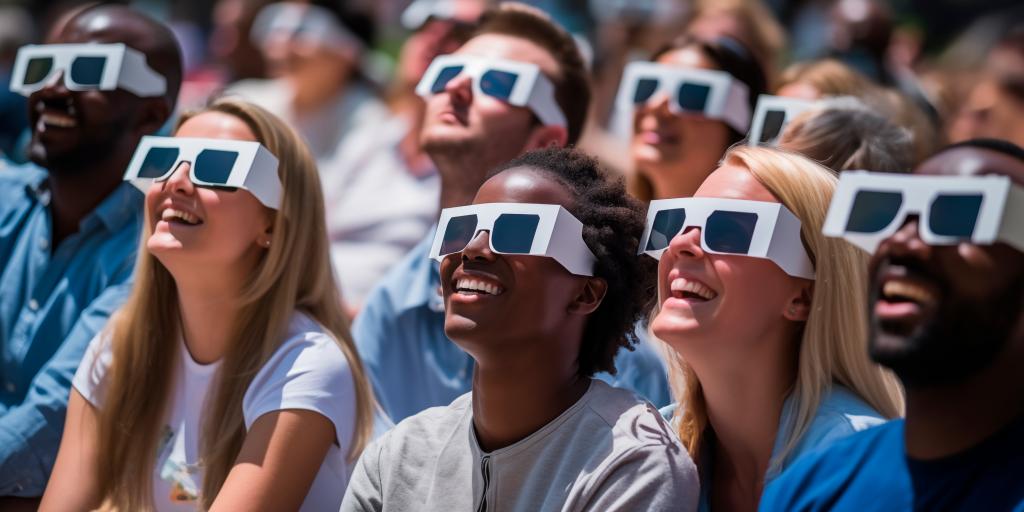People have been looking up to the sky for answers for millennia, for different reasons, whether to look for a sign from their gods, to predict the weather, or to learn more about the stars… Solar eclipses have been a subject of fascination throughout centuries, and today we have a clearer understanding of what they actually are, and we still find them exciting.
It’s an opportunity to be reminded of our place in the solar system and the cosmos and witness the sun and moon cycles coming together. But did you know that during an eclipse, when less and less of the sun is exposed, the visible portions have the same brightness as if the moon did not block them? The intensity of the sun's rays during an eclipse is magnified and can cause serious damage to your eyes.
Safe observation is important to ensure an enjoyable experience. To make the most out of it, you can buy solar eye glasses. Remember that regular sunnies, no matter how dark, are not safe for looking at the sun during an eclipse. Instead, you need a pair of specifically designed glasses for proper protection from the harmful effects of solar radiation.
Understanding the dangers of solar eclipses and taking necessary precautions to protect your eyes can help you enjoy the daylight darkening of the sky worry-free. Here is what you need to know before making a purchase.
Tips on Buying Solar Glasses

They feature special lenses that block out most of the sun’s UV rays, as well as infrared radiation. When choosing a pair, look for glasses that are labeled ISO 12312-2 compliant. It indicates that they have been tested and approved. Most of them are designed to fit securely on your face without leaving any gaps or openings that could allow harmful rays to reach your eyes.
Often, they are made with a polyester film coated in aluminum, and the great thing is that they’re easy to find and affordable. Always buy from a reputable supplier, so you know you’re getting a high-quality product and be confident in the safety of your eclipse glasses. Keep in mind that viewing an annular, partial and total solar eclipse is not the same.
Solar eclipses can take on different forms. So, where the moon appears smaller than the sun and creates a ring of fire around it, that’s an annular eclipse, where the moon partially covers the sun and creates a crescent shape, you guess it, it’s a partial eclipse, and where the moon totally obscures the sun, that’s a total eclipse.
During a total eclipse, there is a brief period, the total phase, when the moon completely blocks the sun. And it’s the only time when it’s safe to look directly at the sun without specialized eye protection. When it comes to partial or annual solar eclipses, there is no period of totality, so it means that it’s never safe to look directly at the sun without proper eye protection for solar viewing.
Additional Tips
To use your solar eye glasses safely, make sure to inspect them for any defects or damage first. Then check if they fit securely on your face and cover your eyes completely. If they do, put them on before looking at the sun and keep them on as long as you’ll be viewing. Don’t remove the glasses while looking at the sun as sometimes even a brief exposure can be harmful. Looking at the sun for even a few seconds can cause long-lasting or permanent damage.
If you’re viewing the eclipse through a camera lens, binoculars or a telescope, don’t use eclipse glasses. Instead, you can use a special-purpose solar filter attached to the front of the device to protect your eyes. Avoid using regular sunglasses, because no matter how dark, they’re not safe for viewing the sun. Solar filters are at least 1000 times darker than the darkest sunglasses out there. If you wear prescription glasses, you can simply put the solar glasses over them and enjoy the eclipse.
Remember that skin safety during an eclipse is important, too. Even during a partial eclipse, the sun is very bright, and if you’re watching an entire eclipse, you’ll most likely be in direct sunlight for hours. Protect your skin by wearing sunscreen, a hat, and protective clothing.
Final Thoughts

Every solar eclipse is an opportunity to learn something new. Teach children about solar eclipses and the importance of wearing solar glasses and make sure they use them correctly. The next one will be partial and is expected on March 29, 2025, so prepare yourself, your family and friends and enjoy safely.
Just keep in mind that dusting off your old eclipse glasses is probably not such a good idea. They may have gotten scratched, damaged or aged, meaning they’re not safe and should be cut into small pieces and discarded or recycled accordingly. Then you can get a new pair from a reputable source and set yourself for a memorable viewing experience without risking your eye safety.